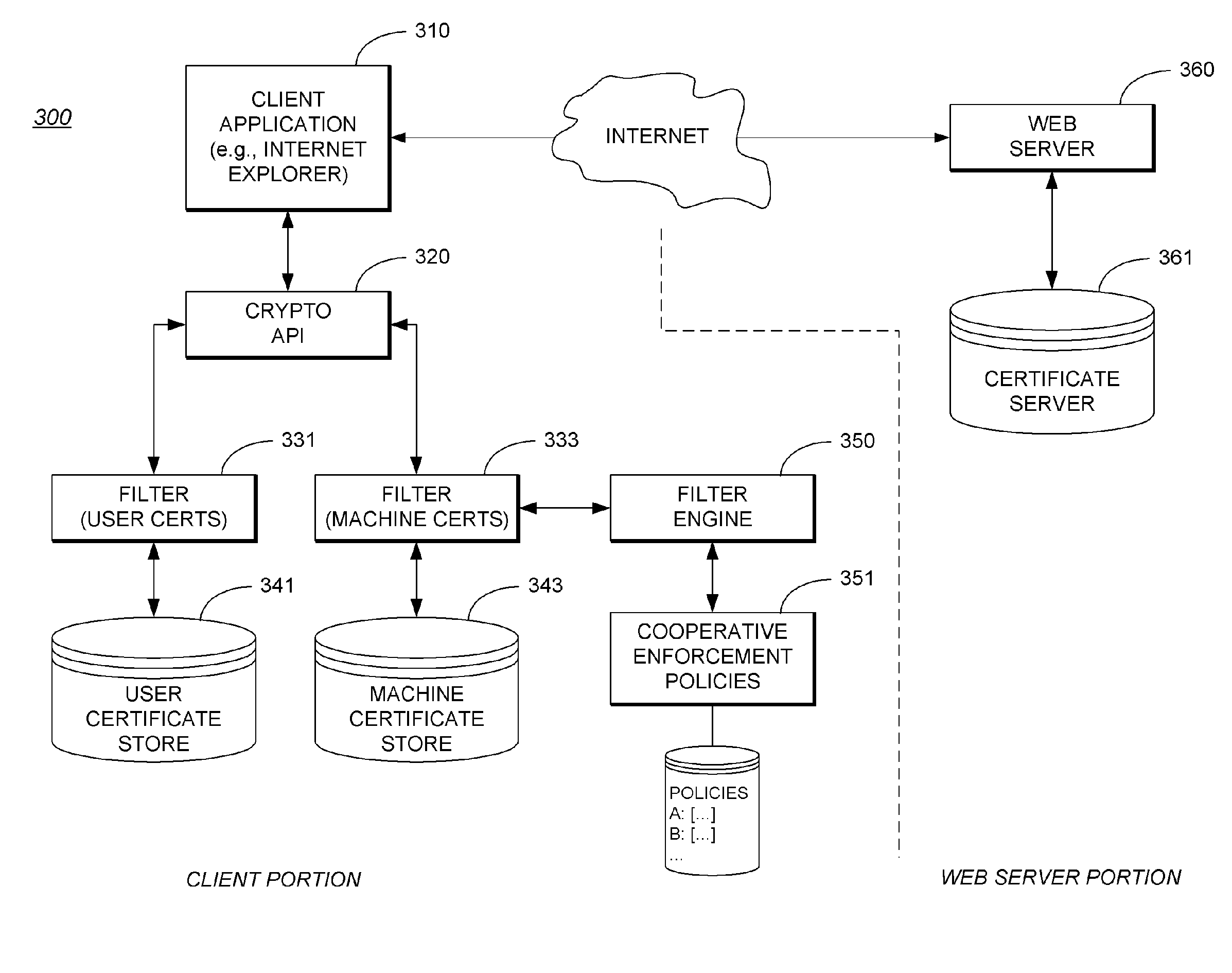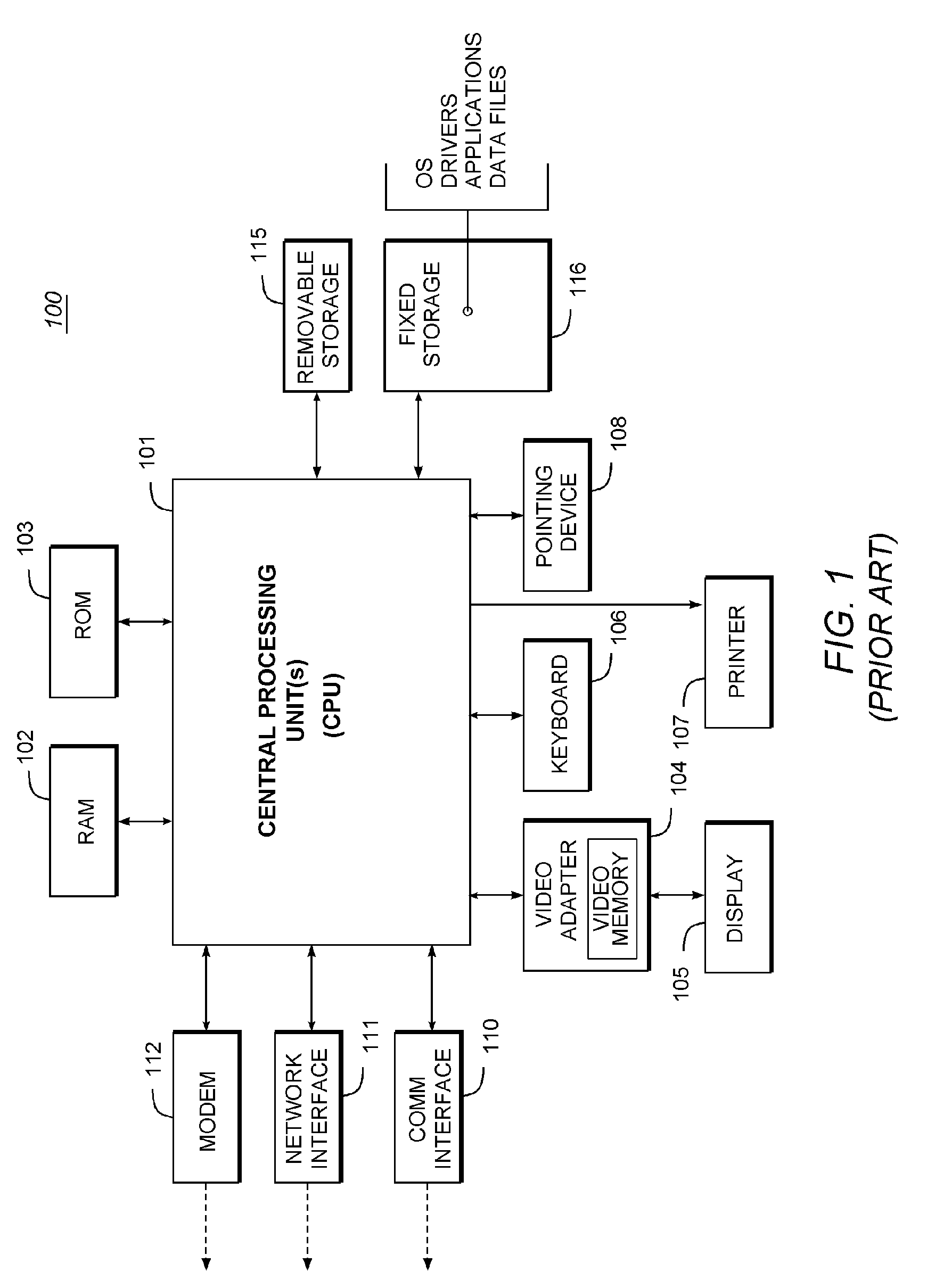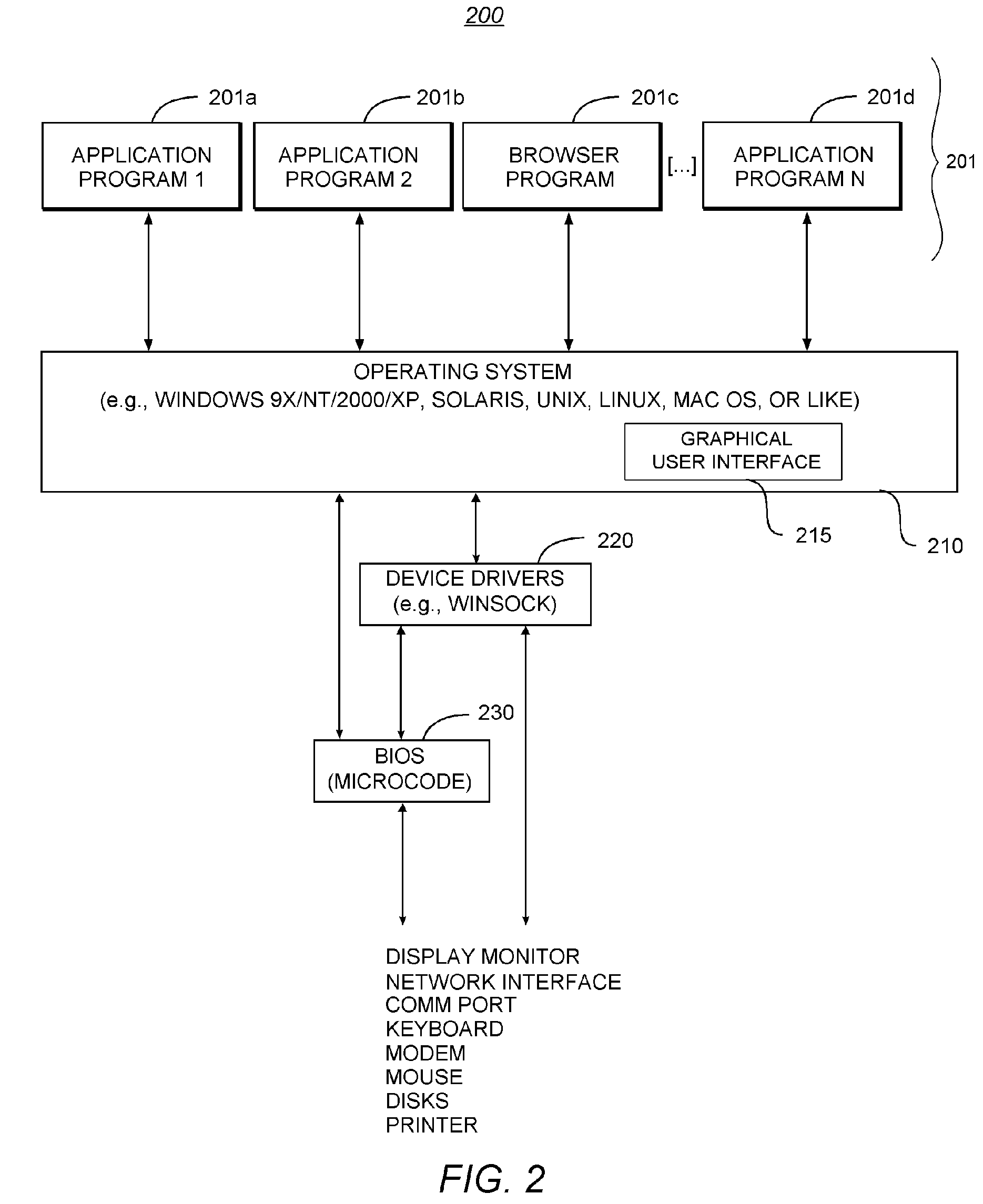Security System Providing Methodology for Cooperative Enforcement of Security Policies During SSL Sessions
a security system and security policy technology, applied in the field of data processing environments, can solve the problems of stealing proprietary data and programs, affecting the protection of computer systems from malicious users and applications, and requiring extra work to be layered on top of existing protocols
- Summary
- Abstract
- Description
- Claims
- Application Information
AI Technical Summary
Benefits of technology
Problems solved by technology
Method used
Image
Examples
Embodiment Construction
Glossary
[0031] The following definitions are offered for purposes of illustration, not limitation, in order to assist with understanding the discussion that follows.
[0032] CryptoAPI: Refers to the Microsoft® Cryptography API (application programming interface) that is available with Microsoft Windows. The Cryptography API contains functions that allow applications to encrypt or digitally sign data in a flexible manner, while providing protection for the user's sensitive private key data. All cryptographic operations are performed by independent modules known as cryptographic service providers (CSPs). One CSP, the Microsoft RSA Base Provider, is included with the operating system. Each CSP has a key database in which it stores its persistent cryptographic keys. Each key database contains one or more key containers, each of which contains all the key pairs belonging to a specific user (or Cryptography API client). Each key container is given a unique name, which applications provid...
PUM
 Login to View More
Login to View More Abstract
Description
Claims
Application Information
 Login to View More
Login to View More - R&D
- Intellectual Property
- Life Sciences
- Materials
- Tech Scout
- Unparalleled Data Quality
- Higher Quality Content
- 60% Fewer Hallucinations
Browse by: Latest US Patents, China's latest patents, Technical Efficacy Thesaurus, Application Domain, Technology Topic, Popular Technical Reports.
© 2025 PatSnap. All rights reserved.Legal|Privacy policy|Modern Slavery Act Transparency Statement|Sitemap|About US| Contact US: help@patsnap.com



